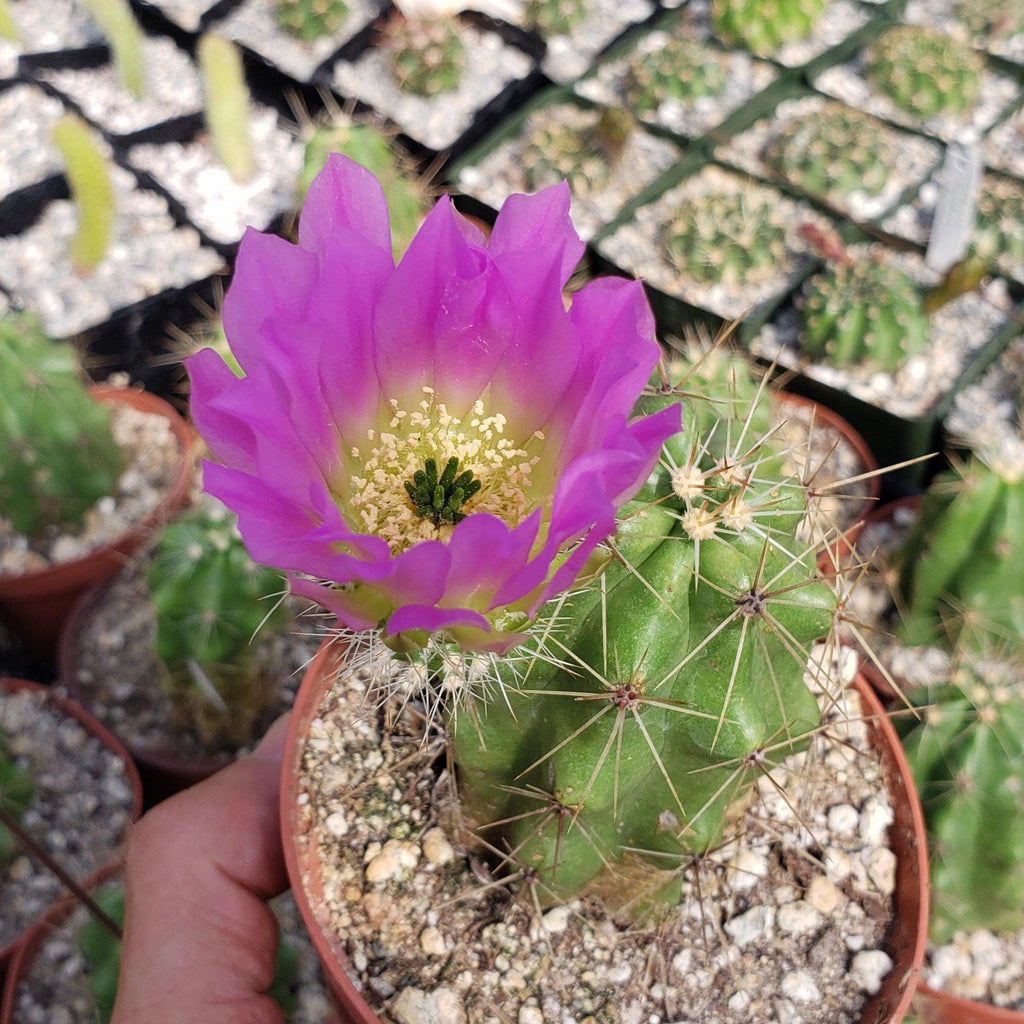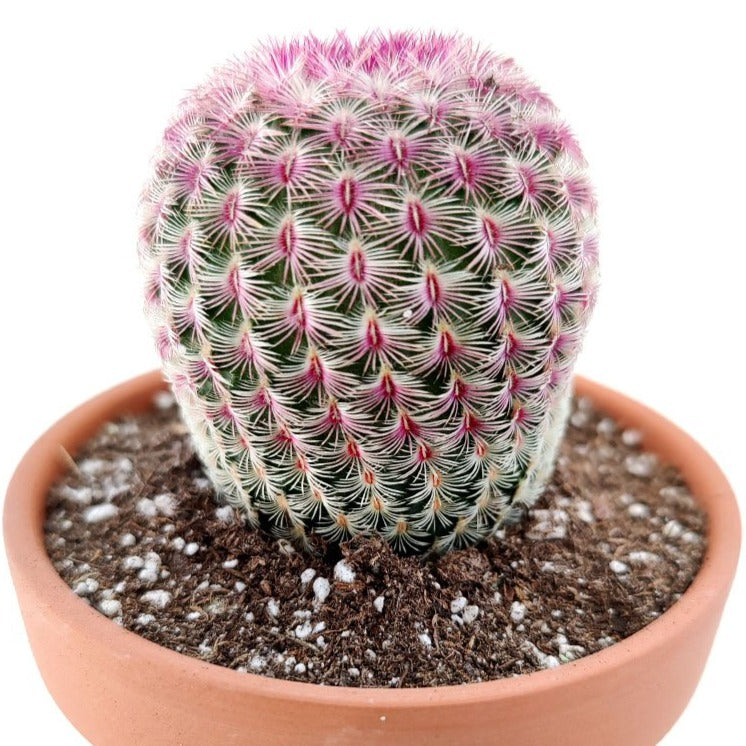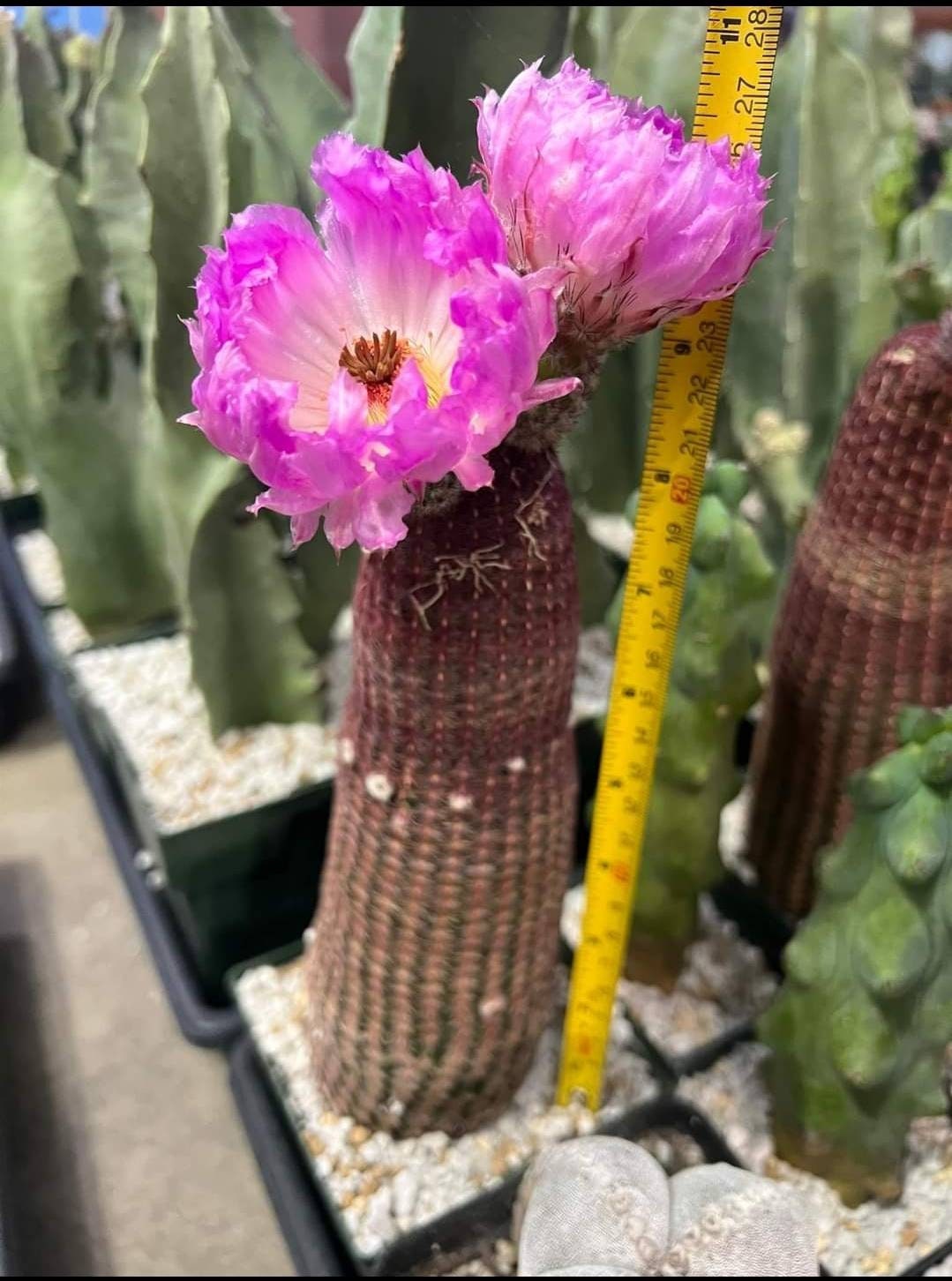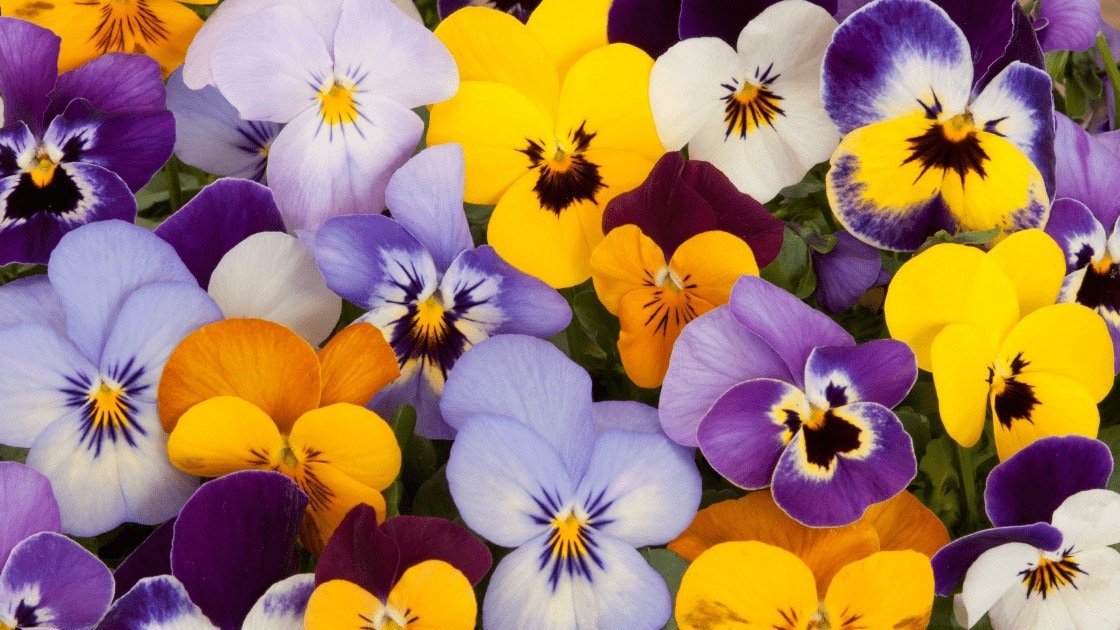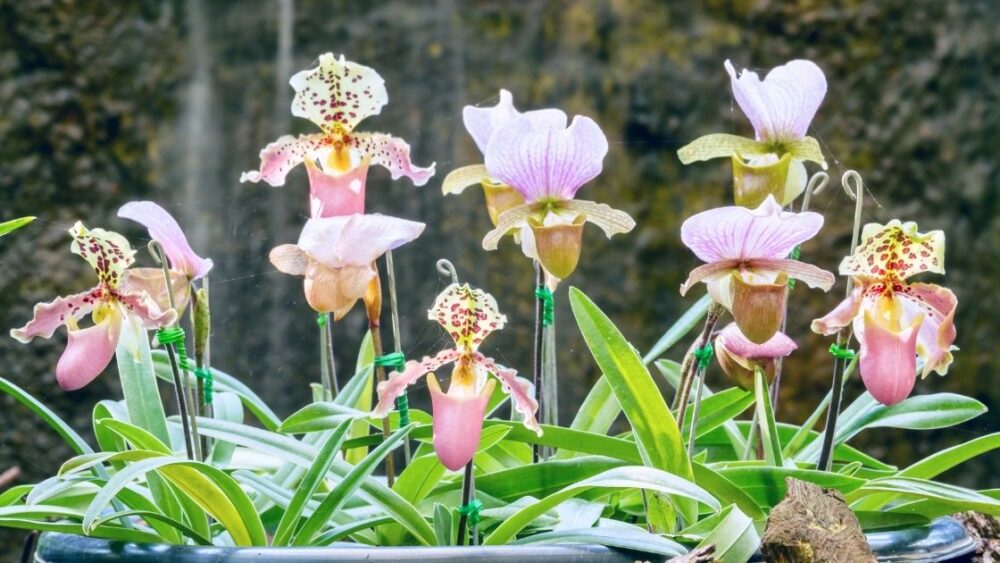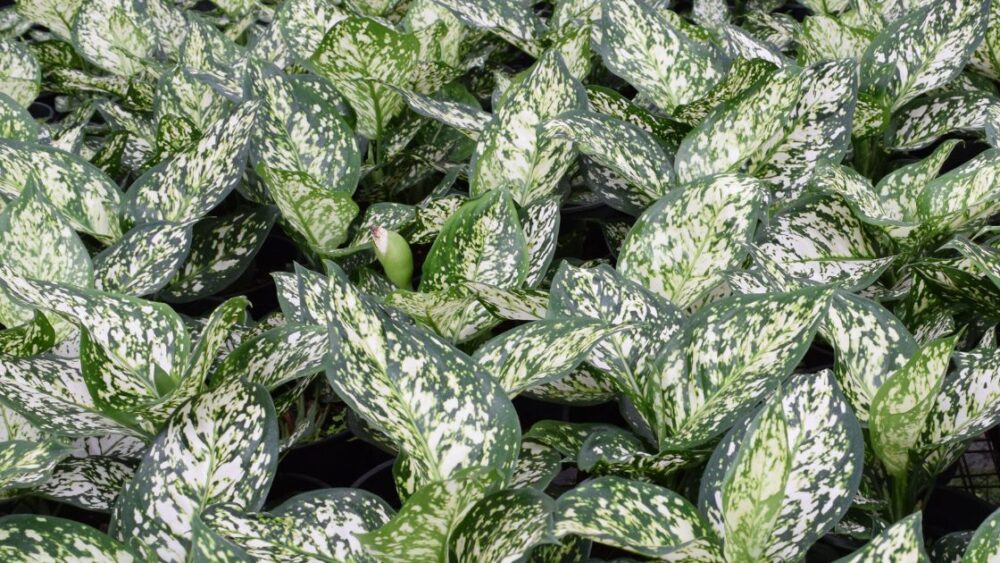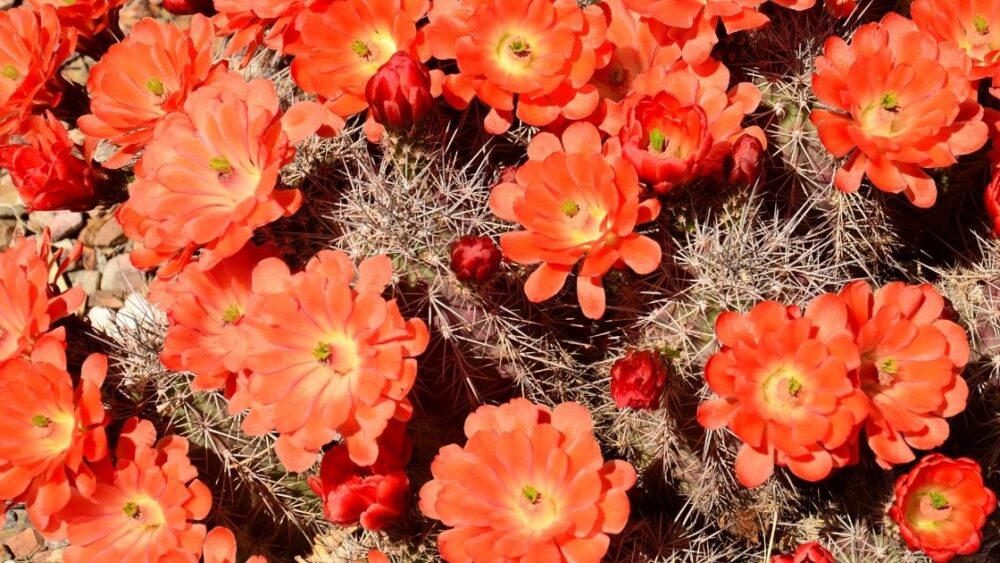
The hedgehog cactus is one of the most desirable plants to grow because of its appealing combination of beautifully delicate flowers along with thorns. The dwarf cacti may produce flowers in various ways, allowing you to have the most diverse selection of indoor flowers possible. These cacti’s brilliant, beautiful flowers are most prominent in the spring, although they can also bloom at other times of the year. Most Echinocereus cacti prefer sunny, warm temperatures; however, certain species can withstand cold weather.
Hedgehog Cactus Background
There are about 60 species of hedgehog cacti (family Cactaceae) in the genus Echinocereus. They are native to central Mexico to the western United States. Fortunately, the hedgehog cactus is one of the house’s easiest plants to care for. This cactus is one of the most beautiful accessories for a desk or sitting area and an ideal addition to a larger cacti garden. The right growing conditions can even make them attractive houseplants.
Generally speaking, these are hardy plants that may be grown both in the yard and in the house. Cacti are known for their longevity and sluggish growth rate. The best time to plant them is in the spring when the weather is warming up.
Browse our Affiliate Products
Are Hedgehog Cactus Easy To Care For?
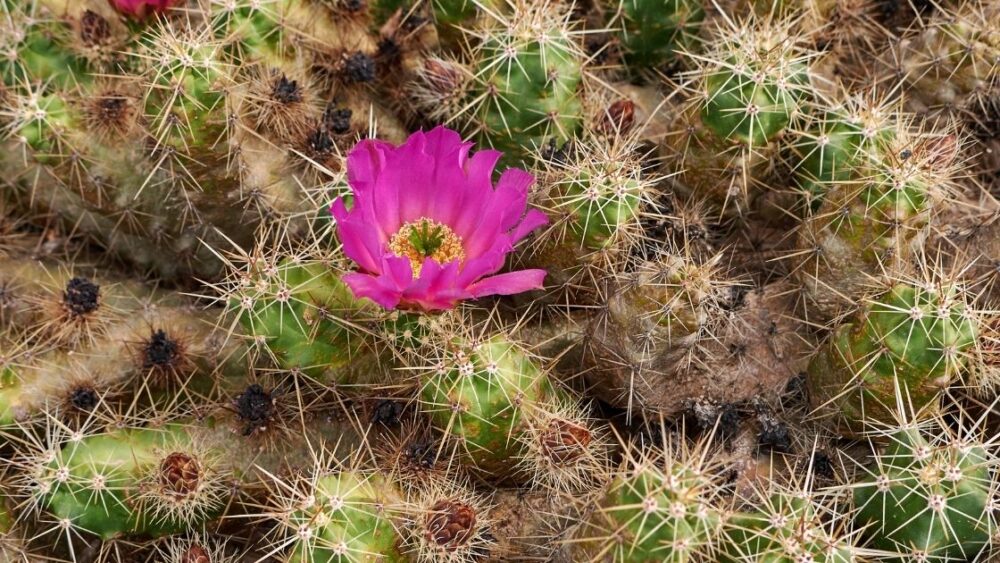
A Hedgehog cactus can be easily grown if you’ve successfully grown any other cactus species in the past. Eliminating moisture signs is the most critical aspect of taking care of your plant. A Hedgehog cactus can be quickly killed by overwatering. Other than that, these cacti require very little attention.
They need to be fed and given a new pot when overcrowded in their container. These cacti have no severe insect or disease problems.
Cactus Articles and Affiliate Products
- For more information on other types of cactus, check out our cactus article here: Cactus Articles
- To view our succulent and cactus soil affiliate product category, click here: Cacti & Succulent Soil
- Also if your interested in fertilizers for succulents and cactuses, Click here: Cacti & Succulent Fertilizers
Add to Wishlist
Get 17% off all orders. Use code SUMMER22
Hedgehog Cactus Care
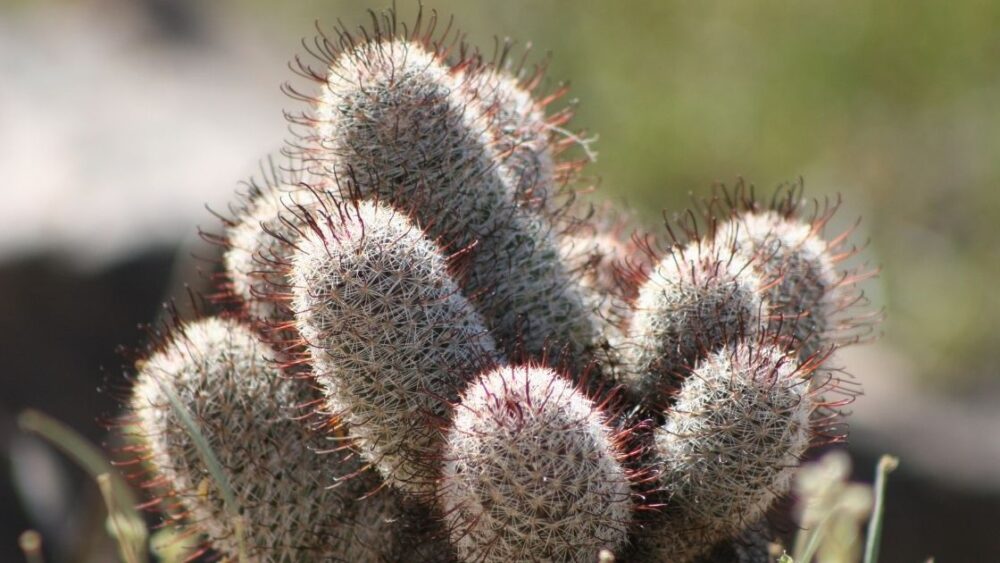
Hedgehog cactus is an easy-to-grow plant that is less likely to be attacked by insects and diseases.
The only care you need to take when growing this cactus is to provide it with proper sunlight, optimum water, and well-draining soil.
Common Name
There are two common names for this type of cactus, Hedgehog Cactus (referring to the spiny fruit) and Lace Hedgehog Cactus.
Scientific Name
The scientific name of the Hedgehog Cactus is Echinocereus spp.
Growth Cycle
You can plant an Echinocereus all year round, just like the Cephalocereus Old Man Cactus. In ideal conditions, plants grow 1/2 inch per year.
A cactus plant goes through a series of five stages of growth. The plant’s lifecycle includes five distinct phases: germination, growth in the soil, flowering and pollination, and fruit development.
The plant is grown from seed or offset cuttings. Spring or summer is the best time to plant the seed on sandy seedbeds or in containers. In this cactus, offsets emanate from its base.
Sunlight Effect
These cacti require daily exposure to at least six hours of direct sunlight for maximum flowering and expansion. They are tolerant of some shade, which can impair their flowering ability.
Place your plant near a window facing south or east. As a houseplant, make sure it gets as much direct sunlight as possible.
Watering
Echinocereus species have different water requirements. A small amount of moisture is necessary for the survival of these cacti, though. Plants dormant during the winter or soil that isn’t fast-draining can suffer from root rot.
Between bouts of watering, the soil must be allowed to become completely dry. Between the spring and fall seasons, you should water your plant once every two weeks unless it has just gotten rainfall. It would be best to only water your plants once every month during winter.
Adult Size
The hedgehog cactus (which resembles a barrel) grows to a height of 20 inches. However, most of them only reach 6 to 8 inches tall.
Planting Zones
USDA zones 5 to 9 are suitable for planting these cold-hardy cacti. There are several days between the opening and the closing of each flower. The plants grow to 12 inches tall and spread 6 inches wide at a slow rate.
Weather Hardiness
Echinocereus species differ in their preferred temperature ranges. A few cacti can withstand temperatures down to or below zero Fahrenheit without ill effects. Temperatures above 50 degrees Fahrenheit are ideal for them to grow in. As long as the soil is well-drained, they don’t have to worry about humidity.
Propagation Of Hedgehog Cactus
Seeds and offsets are both effective methods of propagating hedgehog cacti. Take caution while removing a balance from a mature plant to retain part of its roots. A callus will grow on top of the cut end as it dries in the open air. Please place it in a well-ventilated area and ensure it gets enough sunlight. Wait for new growth to appear before re-watering the soil.
Toxicity Of Hedgehog Cactus
These Hedgehog cacti have no known harmful effects; however, their spines can be extremely sharp and hazardous for pets and children.
Anyhow, these plants are not poisonous and are completely safe to grow. For instance, cultivating Engelmann’s Hedgehog alongside other desert cacti and succulents with similar growing conditions is possible.
Dormancy
These plants go into dormancy from October through the beginning of spring, requiring less watering. In addition, the hedgehog cactus demand weekly irrigation while actively developing. It is essential to water your cacti more frequently during hot weather.
Soil
The soil should have good drainage and be sandy and loose for cacti like Echinocereus. Using potting soil specifically formulated for succulents and cacti will provide the best growing conditions for plants grown in containers.
Bloom
Spring is the best season to see them blossom, but growth spurts can occur anytime. The blooms only last a week before they die. Because of the way they open and close during the day and night, they are intriguing.
Fertilization For Hedgehog Cactus
You must apply liquid fertilizer to the scarlet hedgehog cactus once a month during the growing seasons (spring, summer, and fall). Winter months do not require fertilizer. It is easy to incorporate slow-release fertilizer into the soil when repotting in the spring or fall.
Before and after blossoming, apply nitrogen fertilizer and phosphate-potassium fertilizer. The lower the fertilizer content, the better. Multiple applications of low-concentrate fertilizer are better than a single application of high-concentrate fertilizer. Excessive fertilizing may be to blame if the plant’s base becomes yellow and grows slowly.
Hedgehog Cactus Common Problems
Mealybugs and scale insects are the most prevalent pests to watch out for. To keep pests at bay, place the plant in a well-ventilated area with minimal humidity. If the water is overly wet, root rot and mealybugs will occur. To avoid these pests and illnesses, you must drain the soil properly. Experts propose repotting the plant if the problems don’t go away.
What To Do If Your Hedgehog Cactus Is Dying?
Frequent watering guarantees a cactus’ death. You can try to eliminate the unhealthy dirt and replace it with new, healthy soil. Before replanting in a fresh potting medium, you should thoroughly clean the roots. Using cuttings from an old, weak plant, you can create a new, healthy one.
Final Thoughts
Considering how easy hedgehog cacti are to cultivate and care for, we know you won’t be able to say no to them. The wait for these cacti’s fascinating flowers to bloom is well worth it, given how little care they require and how cute they are to look at in the meantime. Create some room in your home for these stunning additions, and you will not regret your decision.




